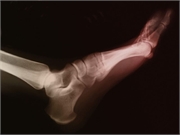Men had higher global point prevalence estimates for gout; prevalence higher in older age groups
WEDNESDAY, Aug. 5, 2020 (HealthDay News) — From 1990 to 2017, the burden of gout increased across the world, according to a study published online Aug. 5 in Arthritis & Rheumatology.
Saeid Safiri, Ph.D., from the Aging Research Institute at the Tabriz University of Medical Sciences in Iran, and colleagues extracted data from the Global Burden of Diseases, Injuries, and Risk Factors Study 2017 to describe the level and trends of point prevalence, annual incidence, and years lived with disability (YLD) for gout and its attributable risk factors in 195 countries and territories from 1990 to 2017.
The researchers found that in 2017, there were about 41.2 million prevalent cases of gout, with 7.4 million incident cases per year and almost 1.3 million YLDs. In 2017, the global age-standardized point prevalence estimates and annual incidence rates were 510.6 and 91.8 per 100,000, respectively, representing an increase of 7.2 and 5.5 percent, respectively, from 1990. The corresponding increase in the age-standardized YLD rate was 15.9 per 100,000, representing a 7.2 percent increase since 1990. Men had higher global point prevalence estimates of gout; in 2017, a higher prevalence was seen in older age groups and with increasing age for men and women. Developed regions and countries generally had the highest burden of gout.
“The findings highlight the need for public policy intervention through disease prevention programs, for example, targeting middle-aged male populations with an educational program to describe gout, its risk factors, consequences, and effective disease management plans,” the authors write.
Copyright © 2020 HealthDay. All rights reserved.








